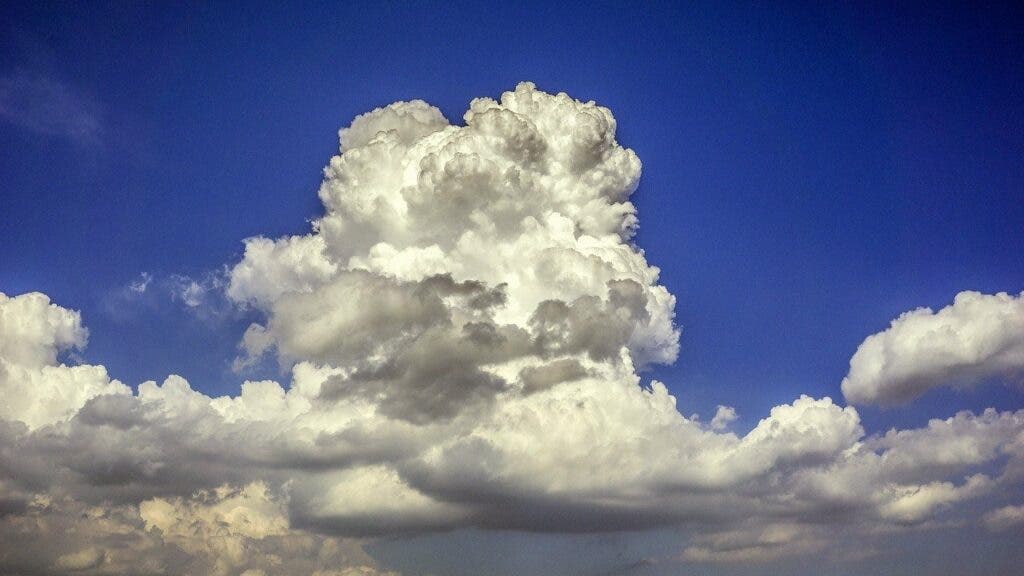
There are a lot of types of different types of clouds, each with its own characteristic shape and preferred altitude of formation. The most common and most recognizable clouds are called cumulus clouds. Generally speaking, though, all clouds are just big fluffy piles of water vapor and tiny ice crystals.
Since they float ever so gracefully in the sky, one could naturally assert that clouds must be less dense than air. In reality, that’s half-true. Sometimes the density of a cloud is indeed lower than the surrounding dry air, sometimes it’s actually higher. This might beg the question: how much does a cloud weigh in the first place?
Putting a fluffy cloud on the scale
Believe it or not, someone actually formally measured the weight of a cloud. Speaking to Mental Floss, Peggy LeMone, a researcher at the National Center for Atmospheric Research, says that the water density of a typical cumulus cloud is half a gram per cubic meter. For comparison, that’s about a small marble’s worth of water inside a bathtub.
This water, however, is not concentrated in one spot in the cloud. The water content is unevenly distributed across the entire volume of a cloud, with each drop no larger than 0.003 millimeters in diameter. For every cubic meter of a cumulus cloud, there are around one million drops — that’s how tiny the water droplets can be.
To evaluate the weight of a cloud, its size also needs to be measured. One can determine the surface of a cumulus cloud by simply measuring the size of the shadow cast on the ground. LeMone did this by recording her car’s odometer as she drove under a cloud.
A typical cumulus is about a kilometer across and since its shape resembles a cube, this means the cloud’s volume is about one billion cubic meters.
To determine the weight of a cumulus’ water, we just have to multiply the density by the volume, equaling 500,000,000 grams of water — 500 tonnes.
In other words, the water inside your typical cumulus cloud weighs as much as four blue whales or one hundred elephants.
Grey, menacing-looking thunder clouds might appear denser. In fact, they have roughly the same amount of water per cubic meter as a cumulus. However, they do cover most of the sky, easily reaching 500 kilometers across, although they are much more shallow, perhaps 200 meters thick. This makes them about 50,000 times bigger than a cumulus, which is equivalent to around 25 million tonnes of water.
If you want to be really precise, you can also add the weight of air, which has a density of one cubic meter. So, one cumulus cloud should weigh around 1,000,500 tonnes of air and water.
Why does a cloud float?
Since a cloud is also made of air, why do clouds float? One important reason why clouds don’t just fall is thanks to the size of the water droplets, which are so small you need a million of them to make one single raindrop. Due to their small surface area, the effect of gravity is negated by winds, updrafts of warm air, and friction in general.
Most of the time, a cumulus cloud is less dense than dry air, which makes it naturally buoyant.
A cloud will eventually fall, though, bit by bit, once the water density rises. We all know this as rain!






